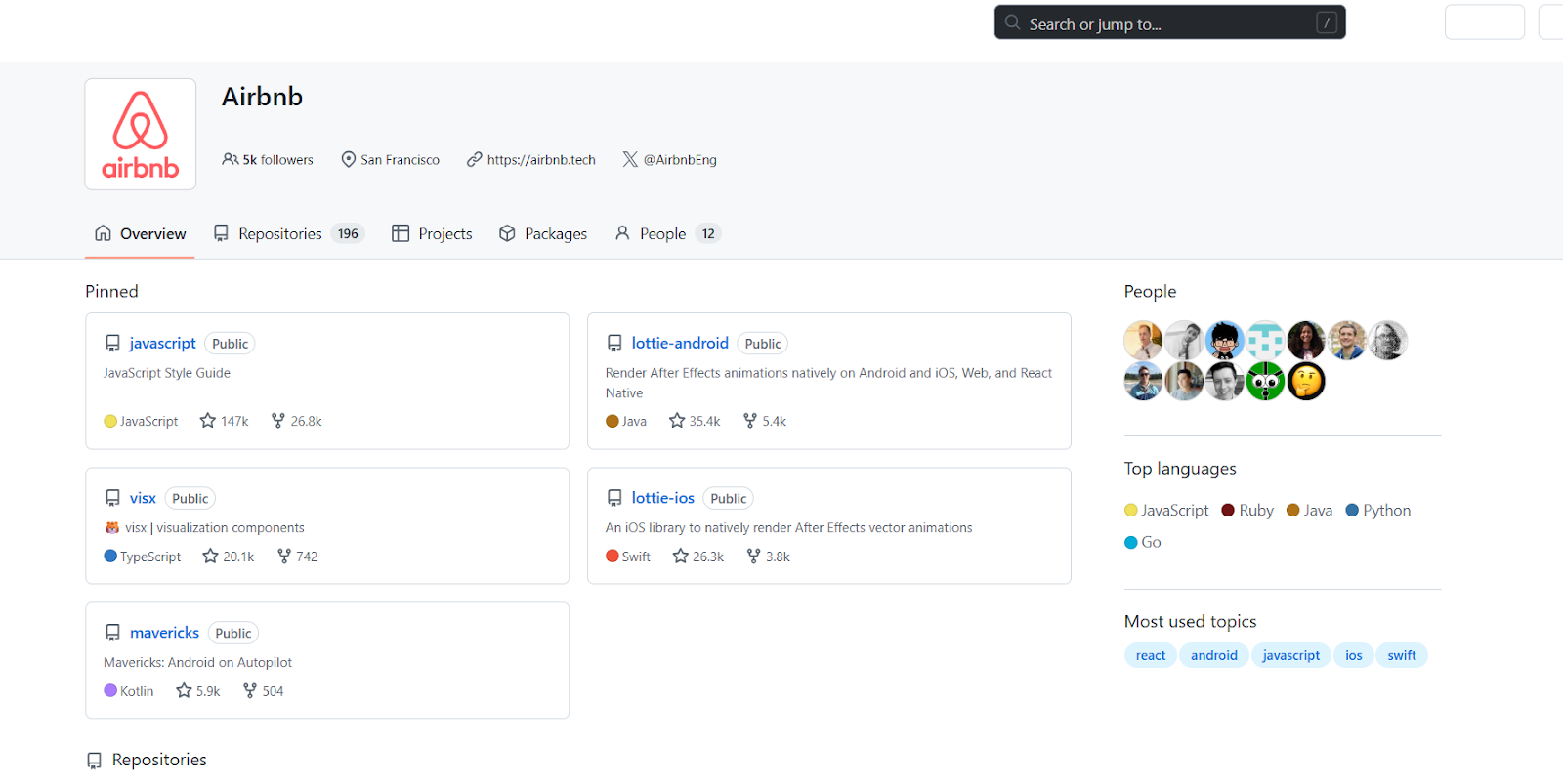

When it comes to sourcing developers, LinkedIn is overcrowded and resumes rarely reflect actual coding ability. If you want to go beyond what candidates say they can do - and find out what they actually build - GitHub is where you look.
GitHub isn’t just a code hosting platform. It’s a live, open record of what developers care about, contribute to, and improve. Whether they’re building personal tools, maintaining libraries, or contributing to major open-source projects, developers leave behind rich signals that recruiters can use to find top talent - especially the top 10% who may never apply through job boards.
This guide will show you how to use GitHub like a pro recruiter: with detailed search techniques, evaluation methods, and messaging tips that help you stand out and source smarter.
Why GitHub Matters More Than Ever
Some of the best developers don’t optimize for LinkedIn. They optimize for code. Their visibility comes from the quality of their contributions, not from a flashy resume. GitHub, in this sense, becomes a recruiter’s unfair advantage.
While many recruiters overlook GitHub as “too technical”, that’s exactly why it works. It gives you a direct lens into how someone solves problems, what they’re passionate about, and what technologies they use - not just what they list.
More importantly, GitHub is home to thousands of developers who are not actively applying but are very much engaged. Especially if you’re hiring for senior IC roles, backend or DevOps engineers, or contributors to open-source ecosystems, GitHub is where they’re quietly doing the work.
How to Search GitHub for Talent
Finding the right profiles starts with the right search technique. GitHub has a built-in search bar, but some of the best results come from combining Google X-ray, tech-stack project mining, and GitHub’s own advanced filters.
1. Google X-Ray Search
GitHub profiles are indexed by Google, so you can use Boolean search to uncover profiles that GitHub’s native UI doesn’t always surface.
Example 1: Python Developer in India

Example 2: Full Stack JavaScript Developer in San Francisco

Example 3: DevOps Engineers in Bangalore

💡Tip: Use ("full stack" OR "software engineer") to expand for synonyms. Add "github.io" to find personal sites linked from profiles.
2. Tech-Stack Specific Sourcing
Another approach is topic-centric: identify open-source projects or organizations that use the technologies you care about, and find their contributors.
For instance, if hiring a React developer, search GitHub for popular React repos and examine the contributors. Visiting major project orgs (like python/cpython, apache/kafka, mozilla/gecko, etc.) and viewing their contributor lists can surface experts in those stacks.
GitHub also lets you filter by topic keywords – e.g. topic:python or topic:django – to find repos tagged with that topic and see who’s involved. Check GitHub Trending (trending repositories and developers) to spot active folks working on cutting-edge tech.
In short, mapping out key open-source projects and browsing their code or contributor graphs is an effective way to reach developers with specific skills and proven contribution history.
3. Company-Specific Search
If your team prefers candidates from well-known tech organizations, search by company GitHub profiles. Many large companies have a lot of public open-source projects on GitHub. For example, Airbnb’s GitHub org shows Top languages (Airbnb’s top language is JavaScript), repositories, and a People tab listing collaborators. From Airbnb’s page you could click “People” or its popular repos to find JavaScript developers who’ve worked on Airbnb projects. This is “work smarter, not harder."Instead of searching individuals, identify target companies first.
Tech firms like Netflix, Facebook and Airbnb famously use GitHub for recruiting. Netflix recruiters, for instance, search GitHub for developers with very specific skills. Similarly, Facebook looks for contributors to popular open-source projects (and even reviews applicants’ GitHub code). In practice, navigate to a company’s GitHub, note its main languages and repos, then explore contributors or affiliated users. This yields pre-vetted talent from scaled-up organizations.

💡Pro Tip: Many contributors list their location in bios. Use Ctrl+F on People pages with filters like "India" or "San Francisco" to narrow sourcing by geography.
This method is especially helpful for:
- Hiring engineers with product mindset
- Sourcing from scaled-up B2C backgrounds
- Finding talent aligned to specific tech stacks
Evaluating GitHub Profiles
Not all GitHub profiles are created equal. Here’s what to look for:
- Contribution Graph: Green squares are great, but check what’s behind them. Consistency is a plus, but depth matters more than daily commits.
- Type of Contributions: Are they writing original code or just forking? Look for meaningful pull requests, issues, and community engagement.
- Stars & Followers: Projects with 20+ stars show real traction. Even 10–50 followers is notable on GitHub. But don’t over-index on this—quality > popularity.
- Pinned Repos: Read the README. Are these actual, working projects? Clean code, test coverage, and documentation are strong signals.
- Collaboration: Are they submitting PRs to others’ projects? Engaging in issue threads? Good GitHub profiles show teamwork, not just solo work.
- Tech Stack: Check if their stack (languages, frameworks, tooling) aligns with your role. Bonus if they’re using modern or relevant tools.
- Red Flags: Empty profiles, no original code, cloned boilerplate, or long-term inactivity (unless explained) usually aren’t promising.
💡Bonus Tip: To speed up review, open their Top Repositories, sort by stars/forks, and skim README + file tree + last commit date.
Want a deep dive? Read our full guide on evaluating GitHub profiles.
Outreach Best Practices
When you reach out, be transparent and personalized. Introduce yourself, explain how you found them on GitHub, and why you think they’d be a good fit. Reference specific projects or contributions from their profile to show you’ve done your homework.
For example: “I saw your Python library on XYZ repo and was impressed by how you solved [issue]…” Keep your message concise and professional. Emphasize what’s exciting about the role or company (“highlight the opportunity”) and provide a clear call to action. Be mindful that many developers on GitHub aren’t actively job-hunting. Respect their time and follow up politely if needed. A thoughtful, personalized message can spark interest in even passive candidates.
Final Thoughts
GitHub is quietly powerful for tech recruiting. It’s not flashy. It doesn’t spoon-feed you filters or candidate tags. But if you’re serious about finding great engineers - not just good talkers - this is where you look.
You’ll find developers who aren’t checking job boards every week. Developers who care more about good documentation than polished resumes. Developers who are solving hard problems in open view, but under most recruiters’ radar.
Learn how to search, how to evaluate, and how to speak their language - and GitHub won’t just be a sourcing tool. It’ll be your secret weapon.
If you want deeper learnings into tech recruiting, checkout session recording of Learning the Tech for Tech Recruiters.
Along with GitHub, you can find out a detailed guide on Stack Overflow and Cheat Sheet for deeper examples and templates.
Discover More Amazing Content
Explore our recommended blog posts for further reading.

Recruiter's Guide for Background Verification

DevOps Job Description Templates

